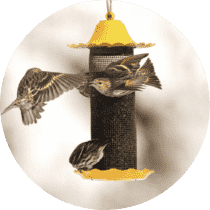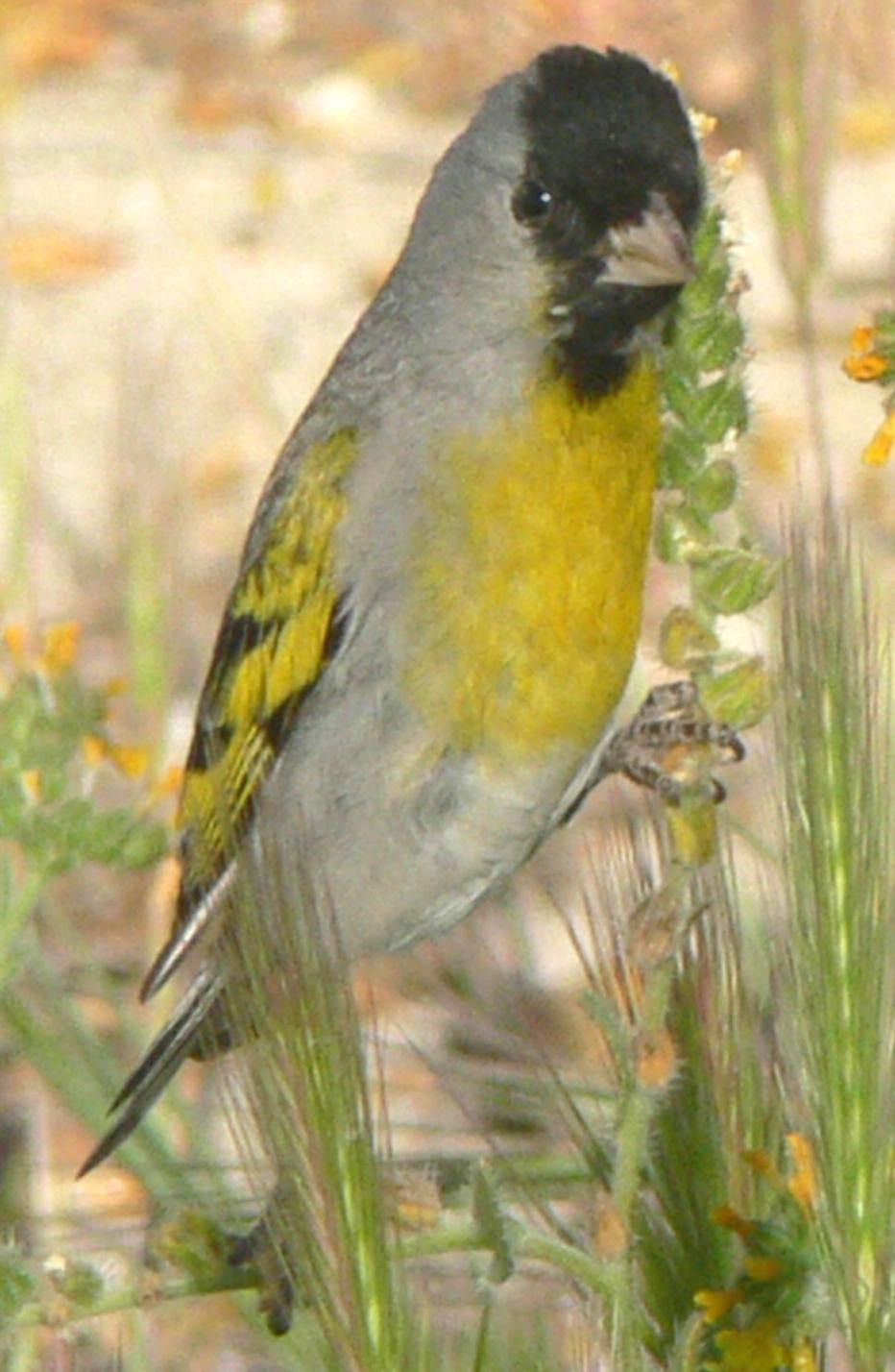Lawrence's Goldfinch
A species of Siskins and new world goldfinches Scientific name : Spinus lawrencei Genus : Siskins and new world goldfinches
Lawrence's Goldfinch, A species of Siskins and new world goldfinches
Botanical name: Spinus lawrencei
Genus: Siskins and new world goldfinches
Content
Description General Info
Description
At about 4.75 in (12.1 cm) long and weighing about 0.4 oz (11 g), it is slightly bigger than the lesser goldfinch and slightly smaller than the American goldfinch, with less yellow in the plumage than either. Adults of both sexes are gray with pink to grayish flesh-color bills, stubbier than other goldfinches'. They have yellow rumps and paired yellowish wing-bars, as well as yellow edges on the flight feathers and yellow on the breast. The tail is black, crossed by a white band. Plumage is duller in winter, brightening after a spring molt. Males are paler, with black caps and faces and larger areas of brighter yellow. Females are browner, have less and duller yellow, and lack the black. Juveniles resemble females but are even duller and have faint streaks on the upperparts and especially the underparts. Calls include "a nasal too-err, also a sharp, high PIti and Itititi". The flight call, which is diagnostic, is given as "a high, clear ti-too" or tink-ul "reminiscent of glass wind-chimes". The song is high-pitched, continuous, and limited in frequency range, including wind-chime notes and especially imitations of other species' calls and other simple and distinctive sounds. Males sing in winter but mostly in the breeding season. Females sing occasionally and briefly. 
Size
12 cm (4.75 in)
Nest Placement
Tree
Clutch Size
3 - 6 eggs
Feeding Habits
Lawrence's Goldfinch primarily consumes plant seeds, favoring seeds of the forget-me-not family, particularly fiddlenecks. They forage by perching and husking seeds before swallowing, occasionally feeding upside-down. Lawrence's Goldfinch joins flocks, often mixed-species, in weedy fields; consumption of insect larvae, plant buds, and some fruit is less common. They may feed on feeder-offered nyjer seeds.
Habitat
Lawrence's Goldfinch is commonly found in arid and open woodlands, including habitats such as chaparral, tall weed fields, and near water sources like streams or ponds. Preferring elevations found in oak woodlands and riparian zones, lawrence's Goldfinch also adapts to suburban areas with ornamental trees and weedy fields. Vegetation types such as pinyon–juniper woodlands, cypress, cedars, and junipers are favored. After breeding, they may also frequent desert arroyos, floodplains, and human-altered landscapes like orchards and parks.
Nest Behavior
During the breeding season, the female lawrence's Goldfinch, guided by the male, selects a site and constructs the nest, which is then lined with soft materials. Egg-laying patterns and parental care specifics are consistent with many small passerine birds, involving both parents in raising the young.
Nest Characteristics
Lawrence's Goldfinch typically builds nests at around 10 feet high, mainly in forked branches of various oak species or in clumps of mistletoe/lace lichen. These cup nests consist of grasses, leaves, and plant down, with an average size of 3 inches wide, 2 inches tall, and an interior cup 1.7 inches wide and 1 inch deep.
Dite type
Granivorous
General Info
Feeding Habits
Bird food type
Bird Feeder Type

Small Tube Feeder

Platform
Behavior
Lawrence's Goldfinch exhibits a mix of solitary and gregarious behaviors throughout the year. In preparation for mating, they form pairs within flocks, with males performing aggressive displays and courtship rituals including song, bill contact, and regurgitation of food. Mating is sometimes observed in flight. Both sexes contribute to nest building and defending, although males are particularly territorial before egg-laying. Post-egg laying, the aggression subsides and small colonies may form. With shared incubation and rearing duties, pair bonds remain strong. Once fledging occurs, lawrence's Goldfinch engages in nomadic upslope movements, often forming large flocks that roost together. Their movements, while unpredictable, can stretch eastward during winter migrations.
Species Status
Not globally threatened.
